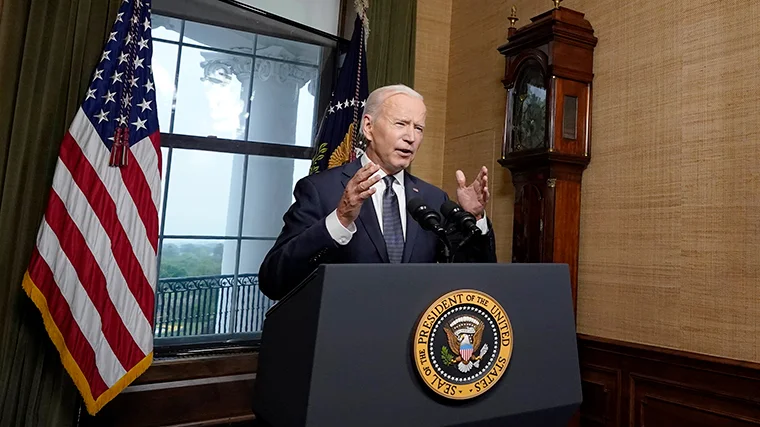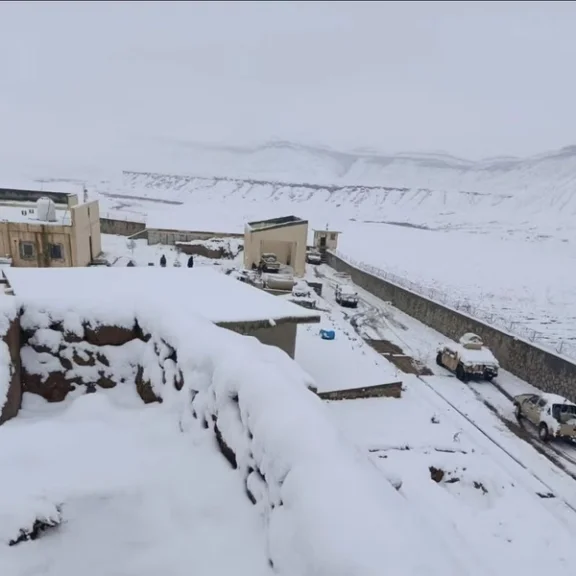There are no endings, only new beginnings – Being situated at the crossroads of Central Asia, the Middle East, and the Subcontinent, Afghanistan signals the change the region is going to witness.
In the aftermath of President Joe Biden’s announcement of the United States military withdrawal from Afghanistan, the continued problems in the heart of the world may undergo a shift considering the political, economic, and security interests of the stakeholders involved.
Both regional and non-regional powers; the US, China, Russia, Pakistan, India, and Iran, with sub-national actors involved, seek influence in Kabul.
Thus, it is significant to consider the multilateral convergences and divergences under the prevalent circumstances. For this purpose, it is essential to take into account Biden’s predecessors’ announcements for similar exit plans after consultations with their allies and the reasons they stayed immaterialized.
Immaterialized Exit Plans
Obama took an anti-war stance to reverse what his predecessor Bush had pursued. His stance was initially promising to end the “dumb war” in Iraq. This later redirected to “good war in Afghanistan that we have to win,” which is well-recorded. Obama directed a former intelligence analyst, Bruce Riedel, to do a rapid policy analysis on Afghanistan in January 2009. However, long before it was over, he approved a Pentagon proposal to send 17,000 more soldiers to Afghanistan. It raised the number to almost 70,000 to confront counterinsurgency (COIN) and to achieve territorial gain.
Eventually, in 2014, Operation Resolute Support replaced Operation Enduring Freedom. Resultantly, it limited the combat role of the US forces. However, the increase in drone attacks and COIN operations produced anti-American sentiments among the Afghans and Pakistan.
This strategy with loose borders widened the crises in Afghanistan. Also, Pakistan experienced an influx of Al-Qaeda (AQ) terrorists coming from Afghanistan. Genesis of Tehreek-e-Taliban Pakistan (TTP) is also considered to be from the same period under the influence of AQ ideologues. Therefore, it is under the influence of AQ ideologues.
Pakistan Facing Repercussions
Considering Pakistan, a US ally they directed their reactionary response towards Pakistan. That reason compelled Pakistan to launch a military operation in erstwhile FATA. Moreover, the threat from the eastern borders remained constant during all those years. Pakistan kept on asserting that the proxy war launched against her was Indian backed from the soil of Afghanistan and India kept on the diplomatic front engaged in a pursuit of isolating Pakistan on the international forums. Back in 2013, William Darlymple asserted that a deadly triangle of Afghanistan, India, and Pakistan will never let the peace prevail in this region.
Hence, it was the trust deficit among the stakeholder in the Afghanistan chessboard that never gave peace a chance to flourish.
In 2017, when President Trump came into the White House, considering the request of General John Nicholson to send an extra 5,000 soldiers to counter the Taliban surge, US troop presence was increased to 13,500. However, after a year, there was a U-Turn and Ambassador Zalmay Khalilzad was appointed to initiate the peace and reconciliation process by taking the Taliban on board. This marks the beginning of the Doha process.
The Equation of Afghanistan and the Role of Pakistan
Pakistan being a regional strategic key player is the only constant in the equation of Afghanistan since the 1970s. Shared history, shared life, and shared borders have given birth to the shared interests.
However, due to the involvement of regional and extra-regional players in the Afghan chessboard, the mistrust between Pakistan and Afghanistan have always been exploited by extra-regional or regional players.
Historically, India and Afghanistan have maintained a stable and close relationship except for the Taliban period. Afghanistan is significant for India in terms of strategic, political and economic expansion. India views Afghanistan as a platform that may materialize her claim of becoming a regional hegemonic power. In the aftermath of 9/11, especially after the Bonn Agreement in 2001, India got an opportunity to ingress gradually in Afghanistan.
On top of that, India’s foreign policy posture in the last two decades indicates India has exploited soft power to exert influence in the region. For this purpose, India has used Afghanistan as a testing ground. This has affected the long-term goals associated with the US war in Afghanistan. In addition, the influence of Indian foreign policy has caused a trust deficit between the state-to-state relationship of Afghanistan and Pakistan and Pakistan and the US.
Underlying Indian Threats
Hence, there is no doubt that India seeks a role in Afghanistan. India asserts that it is a developmental role, which she seeks the most. General Bipin Rawat recently stated in the same context after the speech of the POTUS on April, 15th. Also, Rakesh Sood in a recent special report has emphasized the same policy perspective. He argued that “India lacks the leverage to play ‘spoiler’, unlike Afghanistan’s other neighbours”.
Here it is of great significance to consider the economic stakes India can have in Afghanistan.
With the two decades of investment in addition to penetration into the governance system through narrow-minded anti-Pakistan policies, evidently, India has already played ‘spoiler’ in Afghanistan. The implications are grave for the US in particular and the regional players in general.
Therefore, the strategic, political and economic stakes are indeed huge for India in Afghanistan. President Biden’s withdrawal announcement has definitely triggered the regional players. Especially those interested in seeking a developmental role in the context of CARs and the North-South Corridor will be throwing out the money in Afghanistan.
However, by exploiting the geoeconomics of the region, the convergence of interest among the regional and the extra-regional players can be sought. The speech of President Joe Biden is indicative of certain facts. This includes those concerns and animosity aside, regional stability and peace can be sought through mutual efforts.
Mutual Interests – Convergences and Divergences
Here it is essential to realize, undoubtedly the US, Russia and India share mutual interests in Afghanistan. However, the means to achieve mutual interests vary.
This has brought Russia closer to Pakistan allied with China. Since both Russia and China view the US footprint in the region with concern. Therefore, knowing the significance of the new Silk Roads in the Asian century, the emergence of a regional bloc including Iran is likely.
Besides, President Biden talks “America has to compete the stiff competition we’re facing from an increasingly assertive China”. This indicates the US focus on the initiative like QUAD and the Asia Pacific. In addition to this, in support of Afghanistan, there is an expected realignment of regional partnership. As Biden states, “We have to strengthen our alliances and work with like-minded partners”. He continued to emphasize on ensuring the rules of international norms that govern cyber threats. He further addressed that the emerging technologies that will shape the global future are grounded in democratic values.
In view of this statement, one can establish that the US views its foothold in the region, similar to that of China and Russia. Particularly in terms of diplomatic and humanitarian aspects. Hence, geoeconomics appears as a mutual interest among the regional and extra-regional players.
Post Withdrawal – US Military to Stay ‘Closely Involved in the Peace Process
Moreover, the restoration and rehabilitation process in war-torn Afghanistan requires synergized efforts on the part of regional and extra-regional players. Therefore, it is highly essential that a coordinated approach for regional connectivity is present.
Furthermore, the US military withdrawal with a ‘declaration’ to stay “closely involved in the peace process” to “continue to provide humanitarian aid and assistance to Afghan Government and security forces”, has introduced a new spectrum to reconfigure regional power structure. This ‘declaration’ has provided regional players ‘a blank cheque’, to bring in proxies in the ethnically diverse Afghanistan. For this purpose, those having developmental and economic stakes are likely to funnel money through NGOs and INGOs. Ultimately, it serves as a means to feed proxies to seek influence in Kabul. Consequently, it gives way to the exploitation of governance and human rights.
In addition, the US intends to “reposition” its counterterrorism assets “outside” Afghanistan. In the context of the US military withdrawal, this will neutralize the existent threats. The concerns over “outside” Afghanistan place are genuine. This is because using counterterrorism assets to counter insurgency in Afghanistan has only triggered a response during the tenure of the Obama Administration. Moreover, that undefined “outside” Afghanistan base must have to bear the brunt of counterterrorism operations. Having a tendency to trigger a civil war in Afghanistan, may turn back the clock. Further, the civil war will also engulf the entire region undermining the geoeconomic goals.
Regional Support – A “Do More” for Pakistan
What is more, is the fact, when Biden asks Pakistan “especially” to “do more” to support Afghanistan, in addition to Russia, China, India, and Turkey, it is a must to realize that as a prisoner of geography Pakistan along with the regional powers will be considering the overarching aspects of national interest in connection with the regional interests. The US failure in Afghanistan is often equated not with its inability to introduce a change in Afghanistan but being deficient to alter Pakistan’s policy of “run with the hare and hunt with the hounds”. Considering the art of international diplomacy, it’s the national interests of states that drive policies.
Multilateralism in the multifaceted South Asian regional connectivity represents the themes of cooperation. Just like the way, every beginning has an end; every end has a beginning as well.
Secretary Blinken’s unannounced visit to Afghanistan on April 15th, 2021, in a gesture of the US commitment is representative of the initiation of the process on the part of the US. A day before Afghanistan’s visit Secretary Blinken and Pakistan’s Chief of Army Staff also had a telephone discussion over the prospects of the Afghan Peace.
Conclusion
Hence the relevance of Pakistan in the equation of Afghanistan appears undisputed. Especially, the statement by the Islamic Emirate of Afghanistan released on April 15th, 2021, has naturally brought Pakistan into the role of mediator to ensure regional peace and stability through Afghanistan.
The leverage the Taliban holds is obvious. Nevertheless, they are also aware that the restoration and rehabilitation of post-war Afghanistan will require funds. Therefore, they will also consider their regional realignment in the geopolitical, geoeconomic, and geostrategic context.
Having said that, historically, when retreating from the battlefield, the US opted for a ‘Cut and Lose’ policy. This is a well-established fact now. As a result, the possible impact of the ‘spillover effect’ on the regional players sharing a border with Afghanistan; Pakistan and Iran in particular, may accelerate regional rivalries. Moreover, Biden completely dismissed Iran in his speech. Consequently, Iran’s role as Afghanistan’s neighbour is still undetermined.
Hence, with uncertainty in the air, how things unfold in the upcoming days is anybody’s guess. However, what is certain is that a military withdrawal is neither a big deal nor the only factor associated with the Peace Process. There is indeed a lot more to be done to end this endless war.






